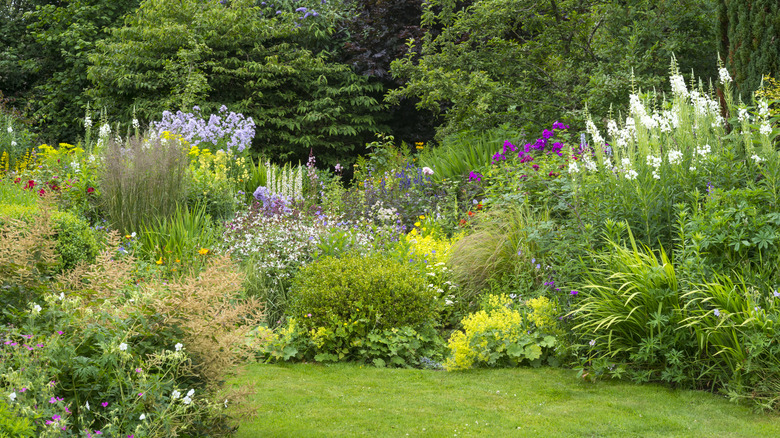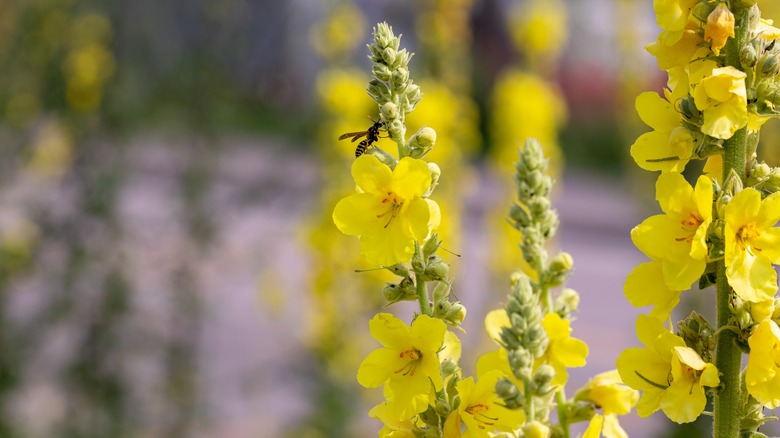Avoid Planting This Wasp-Attracting Flowering Plant In Your Garden
Weeds have earned their bad reputation because of how easily and quickly they can take over a garden or yard. In some cases, people may intentionally plant flowering weeds because they like the appearance. One such weed is the common mullein, or Verbascum thapsus; some people find the tubular flowers of this plant appealing, and it has the benefit of feeding pollinators. Unfortunately, a fully grown common mullein plant also attracts wasps to your garden due to its high nectar content and bright colors (yellow, purple, blue, pink, etc.). So unless you don't mind these stinging pests hanging around your yard, it's best to avoid planting common mullein.
If you think you may already have the common mullein plant growing in your yard, there are some specific characteristics to look for in the early months of its growth. Within the first year, you'll notice a large circular arrangement of thick, fuzzy leaves that are greenish-gray in color. This basal rosette resembles a cabbage. At this stage, it will be fairly easy to get rid of these weeds, since you can just pull them out with your hands. When matured, the weeds will need to be dug out with a shovel or spade.
Other reasons to avoid planting common mullein in your yard
Colorado, Hawaii, and parts of Montana categorize the common mullein as a noxious weed. What does this mean exactly? The "noxious" designation indicates that a non-native plant that can harm other plants, animals or humans, and the environment. Typically, noxious weeds are difficult to control or eradicate. In the case of common mullein, it is an invasive species that spreads prolifically on disturbed soil, making it challenging to remove. Although it can be found in all 50 states today, it's not native to the U.S. — its origins lie in Asia, northern Africa, and Europe.
Common mullein grows aggressively, so it won't take long to dominate your garden — using up resources and space, making it harder for other nearby plants to survive. If you allow common mullein to grow freely in your yard, it will produce an abundance of seeds, increasing the likelihood of it spreading and colonizing. This can make it very challenging to remove in the future. If you want to add some color to your garden without attracting wasps, consider a non-invasive species instead, such as Liatris spicata (blazing stars) or Rudbeckia fulgida (black-eyed Susans). To actively repel wasps and keep them away for good, go for strong-smelling plants like marigolds and geraniums.

